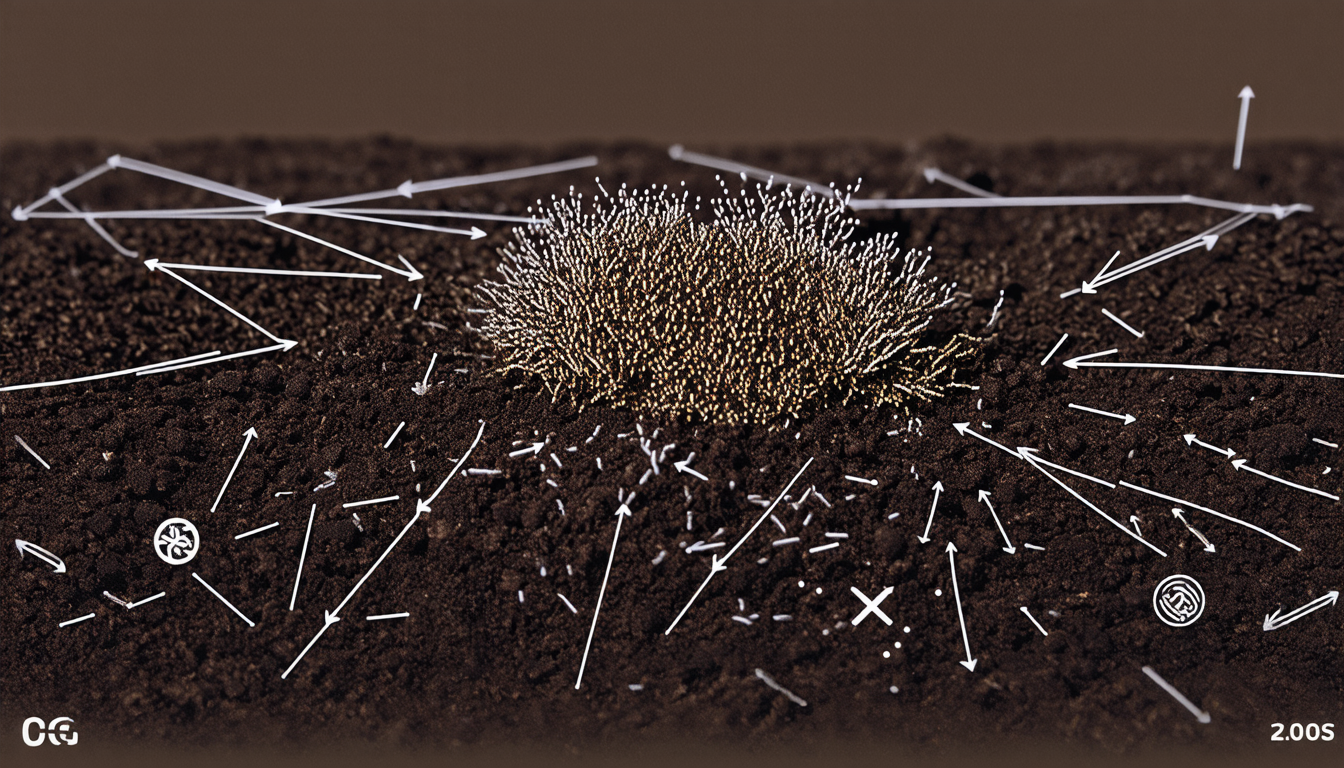Monday 31 March 2025
Soil is often thought of as just a layer of dirt beneath our feet, but it’s actually a complex ecosystem that’s home to an incredible array of microorganisms. These tiny creatures play a crucial role in decomposing organic matter, fixing nitrogen, and fighting off plant diseases – without them, our crops would struggle to thrive.
But despite their importance, soil microbiology is still a relatively new field of study. Scientists have only recently begun to understand the intricate relationships between different species of microorganisms, how they interact with each other, and how they shape the very structure of the soil itself.
One team of researchers has taken a fascinating approach to studying this complex ecosystem. They’ve developed a simple model that simulates the interactions between microbes, nutrients, and the physical structure of the soil. By running simulations on computers, they can explore the ways in which these different components influence each other, and how they shape the overall health of the soil.
The model is based on a set of simple rules: microbes grow by consuming nutrients, which are produced by other microorganisms; microbes also help to create a physical structure for themselves, such as aggregating into clusters or forming networks. By tweaking these parameters, the researchers can explore different scenarios and see how they play out over time.
One surprising finding is that even in a highly simplified model, the interactions between microbes and nutrients lead to complex patterns and behaviors. The researchers found that certain combinations of parameter values could give rise to oscillations – regular cycles of growth and decline – in the population sizes of different microbe species. This is similar to what’s seen in natural ecosystems, where populations of animals or plants can fluctuate over time.
The model also revealed some unexpected insights into how soil structure influences microbial behavior. By changing the way that microbes aggregate into clusters, the researchers found that they could affect not just the local density of microorganisms, but also their ability to spread and colonize new areas. This has important implications for understanding how soil microbiology shapes the physical properties of soil itself.
One potential application of this research is in developing more sustainable agricultural practices. By better understanding how microbial interactions shape the health of the soil, farmers could develop strategies to promote beneficial microorganisms and reduce the use of chemical fertilizers and pesticides. This could lead to healthier soils, more resilient crops, and a reduced environmental impact.
Cite this article: “Unlocking the Secrets of Soil Microbiology”, The Science Archive, 2025.
Soil Microbiology, Microorganisms, Ecosystem, Nitrogen Fixation, Plant Diseases, Crop Health, Agricultural Practices, Sustainable Farming, Soil Structure, Microbial Interactions







